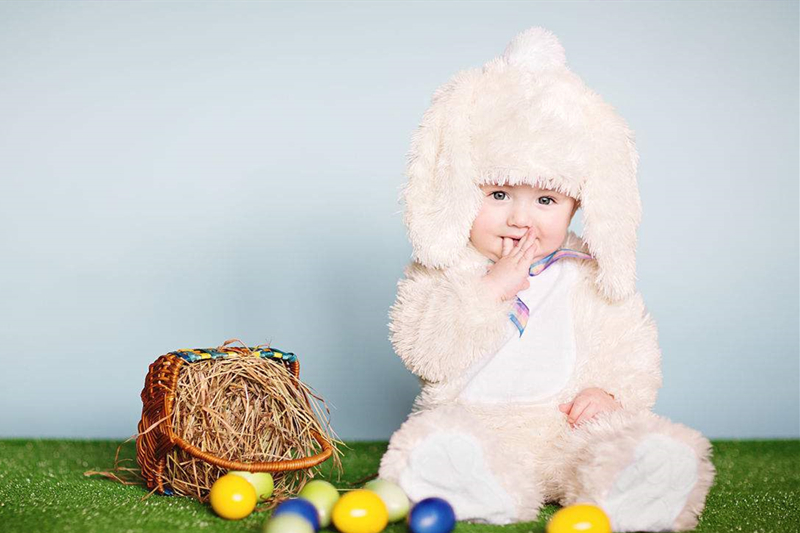Your baby may have been born with a head of hair that could rival Chewbacca. Now, just a few months later, all that’s left are Charlie Brown wisps.
What happened?
Turns out, hair loss can strike at any age — including infancy.
Most babies lose some — or even all — of their hair in the first few months of life. And it’s completely normal.
This hair loss is called alopecia, and in babies it can have several triggers, from hormones to sleeping position. The good news is that it’s very rare for infant hair loss to be associated with any medical problem.
And while every baby is different in how fast hair regrows, rest assured that yours should be tress blessed by their first birthday.
What symptoms are normal?
Most hair loss happens in the first 6 months of life, peaking at about 3 months, say the experts at Oregon Health and Science University.
In some babies, hair regrowth happens about the same time hair falls out, so you may not notice a difference. In others, the hairs fall out quickly, leaving your child cue-ball bald. Both scenarios are normal.
Here’s what else to look for:
loose strands of hair in your hand after you stroke your baby’s head
hair in the bath or on a towel after you’ve shampooed your child’s hair
hair in places your baby rests their head, such as a crib or stroller

Causes of baby hair loss
Most causes of baby hair loss are pretty harmless and include:
Telogen effluvium
Your baby is born with all the hair follicles they’ll ever have. A hair follicle is part of the skin from which hair strands grow.
At birth, some of the follicles are typically in the resting phase (called the telogen phase) and others are in the growing phase (anagen phase). But certain factors can accelerate the telogen phase, causing hair to shed: enter hormones.
Thanks to the umbilical cord, the same hormones that were pulsing through your body during pregnancy and giving you that supermodel head of hair were pulsing through your baby’s, too. But after birth, those hormones drop, triggering hair loss in your baby — and even yourself.
And if you haven’t already been there, done that, believe us when we tell you that labor and delivery are stressful events for everyone involved, including your baby. One theory is that this stress may contribute to telogen effluvium and hair loss.
Friction
Hair’s the rub: Your baby may lose hair on the back of the scalp due to hair rubbing against the hard surfaces of crib mattresses, strollers, and playpens. (Experts recommend placing babies on their backs to sleep to reduce the risk of sudden infant death syndrome, or SIDS.)
Hair loss of this nature is called neonatal occipital alopecia or simply friction alopecia. These hair-thinned patches will start to fill in when babies can roller over, usually by the end of the seventh month.
Researchers theorized that infant hair loss isn’t something that occurs outside the womb, but a physiological event that starts before birth. They concluded that it tends to most often affect babies:
Still, the long-standing assumption that all the time infants spend with their head against different surfaces is the most accepted explanation for friction alopecia.
Cradle cap
Your baby’s crowning glory is studded with crusty, scaly, sometimes oily patches of what looks like hardened dandruff? It’s called cradle crap — er, cradle cap. Doctors aren’t exactly sure what causes it, but many suspect yeast or hormonal changes that make the scalp produce more oil.
Either way, the condition isn’t painful, itchy, or contagious. It also doesn’t cause hair loss, per se — but in an attempt to remove the stubborn scales, you may inadvertently also take out some hair strands.
Most mild cases of cradle cap resolve on their own in a few weeks, though it can persist for as long as a few months (and still be totally normal and harmless).
Ringworm
Call off the exterminators! Ringworm (also called tinea capitas) isn’t caused by worms but by a variety of fungi. It may cause hair loss and often a red, scaly, ring-like rash is seen on the scalp.
According to the doctors at Children’s National in Washington, D.C., ringworm doesn’t usually infect children under age 2. But it’s highly contagious, so if one person in the household has it, it’s possible to spread it via things like shared hats and hairbrushes.
Alopecia areataThis is a skin condition that leads to patchy bald spots on the head. It’s not life-threatening or contagious. Alopecia areata is caused by a defect in the immune system that causes it to attack and destroy healthy hair cells. It’s very rare in children under 6 months, but there have been reported cases.
whose mothers are younger than 34 years of age at the time of the baby’s birth
are delivered vaginally
are delivered full term

 中文
中文